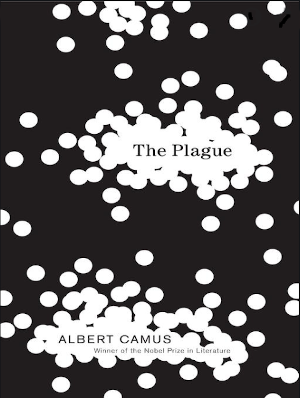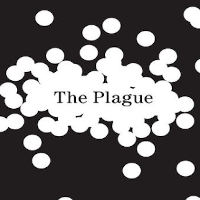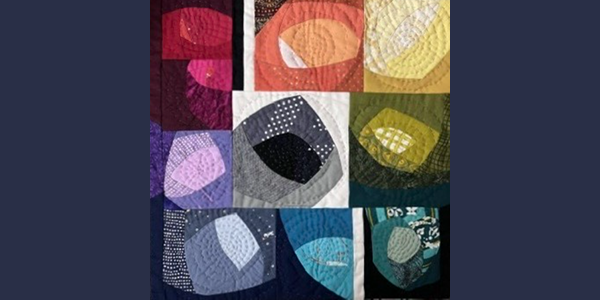— from Jens Kruse —

Recently I had the privilege and pleasure to re-read Albert Camus’ 1948 novel The Plague with a group, by way of ZOOM, of about 15 fellow islanders. This review is indebted to their observations and insights.
The narrator of this novel opens his “chronicle” of “unusual events” in the 1940s with his description of the ordinary, even ugly, city of Oran and its inhabitants. The first section of the novel describes the “portents” of the coming plague: rats come out into the open and die, first by the hundreds, then by the thousands. Then a strange fever begins to affect humans. The authorities at first deny and then minimize the outbreak.
The narrator reflects:
Everybody knows that pestilences have a way of recurring in the world; yet somehow we find it hard to believe in ones that crash down on our heads from a blue sky. There have been as many plagues as wars in history; yet always plagues and wars take people equally by surprise.
A pestilence isn’t a thing made to man’s measure; therefore we tell ourselves that pestilence is a mere bogy of the mind, a bad dream that will pass away. (37)
Even as the death count rises and after the medical authorities have described what looks in all ways like plague, government officials hesitate to take necessary actions until a telegram arrives: “Proclaim a state of plague stop close the town (63).”
In the next three sections Camus’ narrator — based on his own observations, on the accounts of a diarist, and other documents — traces the progression of the plague: the rapidly increasing number of cases and deaths, its strain on the medical system, the economic impact. He describes the strains on the social fabric: the increasingly speedy and mechanical burials and cremations, the alienation of fellow citizens from each other, the descent into quackery and superstition. But he also depicts the quiet heroism of people who volunteer to care for the sick and to help in other ways within the overburdened medical system.
The protagonist of the novel, Dr. Rieux, is himself one of those heroes, providing care all day long and running the auxiliary hospital. But he does not see this as heroism. He says: “It’s a matter of common decency. That’s an idea that may make some people smile, but the only means of fighting the plague is – common decency” (163).”
Camus gives us insight into what life in the grip of the plague is like by following his six major characters: the aforementioned Rieux, a medical doctor; Tarrout, a diarist; Rambert a journalist from Paris who is stranded in the quarantined city; Grand, a bureaucrat and aspiring writer; Cottard, a man with a criminal background; and Father Paneloux, a Jesuit priest.
At the end of the fourth section of the novel the case numbers begin to go down and the fifth and last section recounts how the city is slowly realizing that “epidemic was in retreat” (271) and that “the dominion of the plague was ended” (272). Once that fact is firmly established the city is opened up again and its citizens celebrate with jubilant festivities and fireworks. It is at that moment that Dr. Rieux who is, as it turns out, not just the protagonist of the novel, but also its narrator, decides that he will write this chronicle:
… Dr. Rieux resolved to compile this chronicle, so that he should not be one of those who hold their peace but should bear witness in favor of those plague-stricken people; so that some memorial of the injustice and outrage done them might endure; and to state quite simply what we learn in time of pestilence: that there are more things to admire in men than to despise.
Nonetheless, he knew that the tale he had to tell could not be one of a final victory. It could only be the record of what had had to be done, and what assuredly would have to be done again in the never ending fight against terror and its relentless onslaughts, despite their personal afflictions, by all who, while unable to be saints but refusing to bow down to pestilences, strive their utmost to be healers. (308)
* * *
The Plague has sometimes been read as an allegory of the Nazi occupation of France, something that Camus experienced first hand. He lived in Paris in the 1940s, joined the resistance, and edited the underground journal Le Combat for it. But such a reading, while not invalid, would miss the broader and more powerful metaphoric import of Camus’ Plague. Late in the novel, in an important conversation with Rieux, Tarrout maintains:
(…) that each of us has the plague within him; no one, no one on earth is free from it. And I know, too, that we must keep endless watch on ourselves lest in a careless moment we breathe into somebody’s face and fasten the infection on him. What’s natural is the microbe. All the rest – health, integrity, purity (if you like) – is a product of the human will, of a vigilance that must never falter. (253)
Earlier in the novel the narrator had said:
The evil that is in the world always comes of ignorance, and good intentions may do as much harm as malevolence, if they lack understanding. On the whole, men are more good than bad; that, however, isn’t the real point. But they are more or less ignorant, and it is this that we call vice or virtue; the most incorrigible vice being that of an ignorance that fancies it knows everything and therefore claims for itself the right to kill. The soul of the murderer is blind; and there can be no true goodness nor true love without the utmost clear-sightedness. (131)
Albert Camus’ The Plague is in the collection at the Orcas Library and could be checked out there by way of curbside pickup. It is obtainable also through Darvill’s Bookstore.








